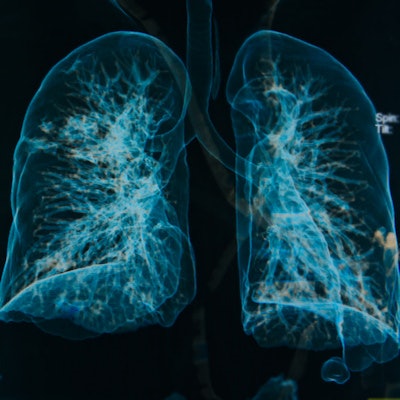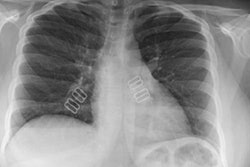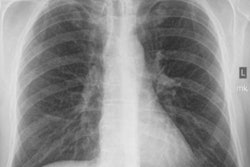
Physicians who are hired to provide a medical opinion in cases of black lung disease may be biased in favor of whoever is paying them to read the images, according to research published March 26 in the Annals of the American Thoracic Society.
Researchers found that the more frequently a physician representing an employer or mine operator offers a medical opinion related to workers compensation cases for black lung disease, also known as pneumoconiosis, the more likely that physician will not identify black lung disease on a chest x-ray.
The opposite is true as well. When a physician works with a miner on their claim process, it is more likely he or she will identify black lung disease.
The chest x-ray is key in determining whether miners are eligible for black lung benefits under the Federal Black Lung Program (FBLP). Physicians who classify chest x-rays are known as B-readers, and they are licensed physicians certified in utilizing the International Labor Office (ILO) system to classify radiographs for pneumoconiosis caused by mineral dust exposure.
"The extent to which a physician works for a specific party in the FBLP legal process can readily predict the direction of their ILO classification for the absence, presence, and severity of pneumoconiosis," wrote a team led by Lee Friedman, PhD, of the School of Public Health at the University of Illinois Chicago.
B-readers must successfully pass an examination offered by the U.S. National Institute for Occupational Safety and Health (NIOSH), and they must recertify every five years. There are approximately 200 B-readers in the U.S.
The B-reader program has been a source of controversy in recent years, however, even as the number of black lung cases has been skyrocketing. In at least one coal mining state, Kentucky, state legislators in 2018 tried to strip radiologists from the ability to participate in the B-reader program in a move seen as an effort to stop x-ray interpretations that were in favor of miners in black lung cases.
In the current study, the investigators undertook an epidemiologic assessment of black lung claims filed to the FBLP between 2000 and 2013 to determine physician classifications of radiographs. FBLP court decisions from 2002 to 2019 were used to evaluate each physician's conflict of interest.
By analyzing 63,780 radiograph classifications made by 264 physicians in FBLP claims filed from 2000 to 2013, the researchers found that B-readers identified as being hired by a coal miner's employer read the images as negative for pneumoconiosis in 84.8% of the records. But a lower percentage of the records were read as negative for pneumoconiosis by those hired by the U.S. Department of Labor or a miner -- 63.2% and 51.3% of the records, respectively.
The researchers believe a strong association exists between source of payment and radiograph classification, suggesting the importance of eliminating financial conflict of interest in what should be an objective determination of whether miners are eligible for black lung benefits.
The group made several proposals for improving the B-reader program. One way to improve objectivity in classifications would involve investing in new imaging technology and artificial intelligence algorithms that classify images could assist in developing an objective standard, the researchers suggest.
In addition, each party should be required to submit requests to the U.S. Department of Labor for reclassification of radiographs by the physicians of their choice. All initial contact and payments should be made by the department, while the other parties should be prohibited from communicating on a claim until the initial classifications are submitted, limiting coordination between the reader and requester. The Department of Labor then could add quality control images to assess accuracy and bias in classifications annually.
Another way to improve oversight would be to build on NIOSH's proposed rule change to decertify B-readers who demonstrate "unreasonably inaccurate classifications." NIOSH wants to establish an investigative system to respond to complaints.
In addition, B-readers should be required to report total annual revenue from chest x-ray classifications, expert testimonies, or other income generated from parties involved in the legal proceedings, according to the investigators.
"Given the clear association between classifications and financial [conflict of interest], a lack of consistency in classifications within and between B-readers, and an absence of an objective gold standard for [chest x-ray] classifications of pneumoconiosis, substantial improvements in transparency, oversight, and objectivity in the classifications of [chest x-rays] for black lung claims are clearly needed," the authors stated.



















